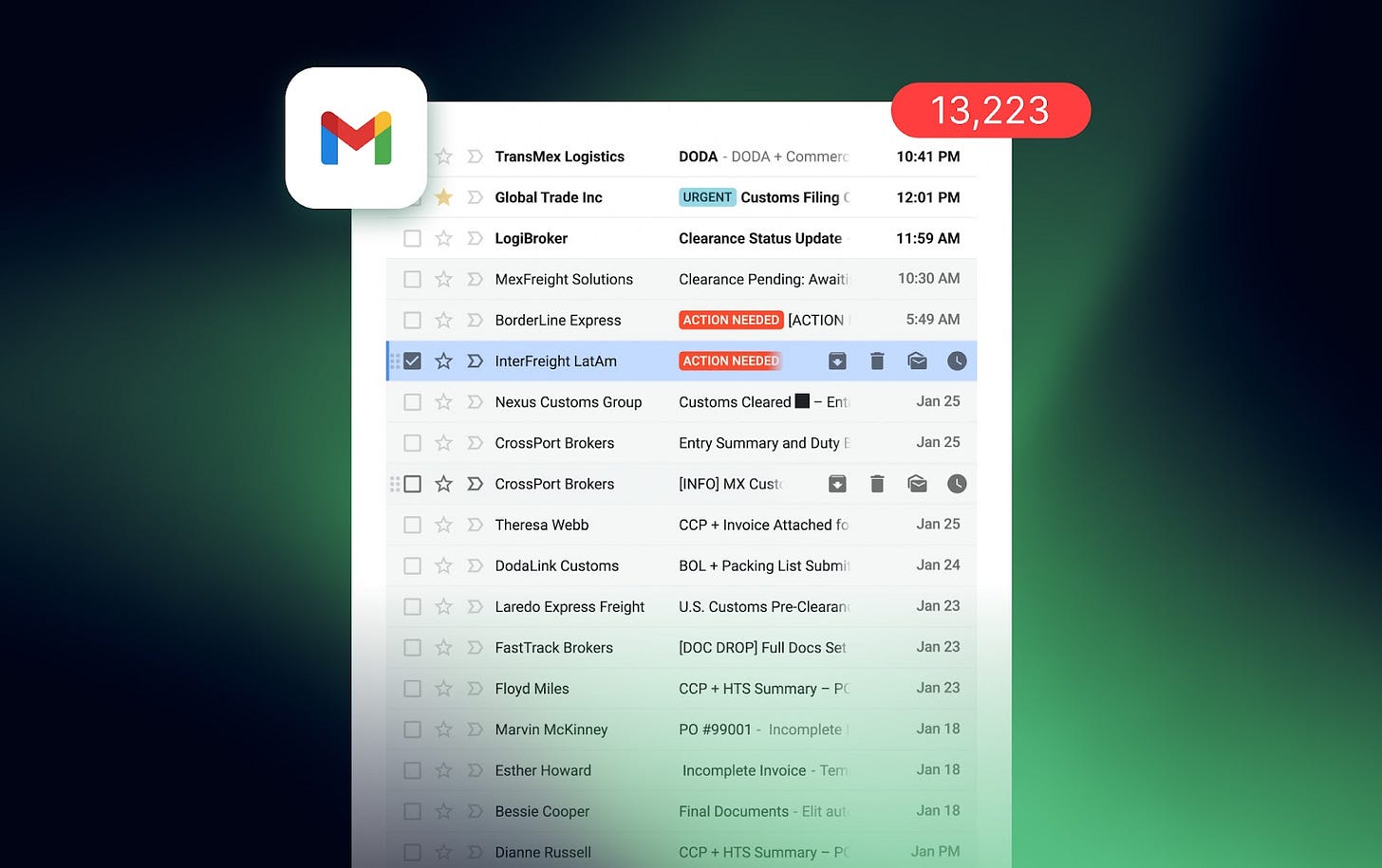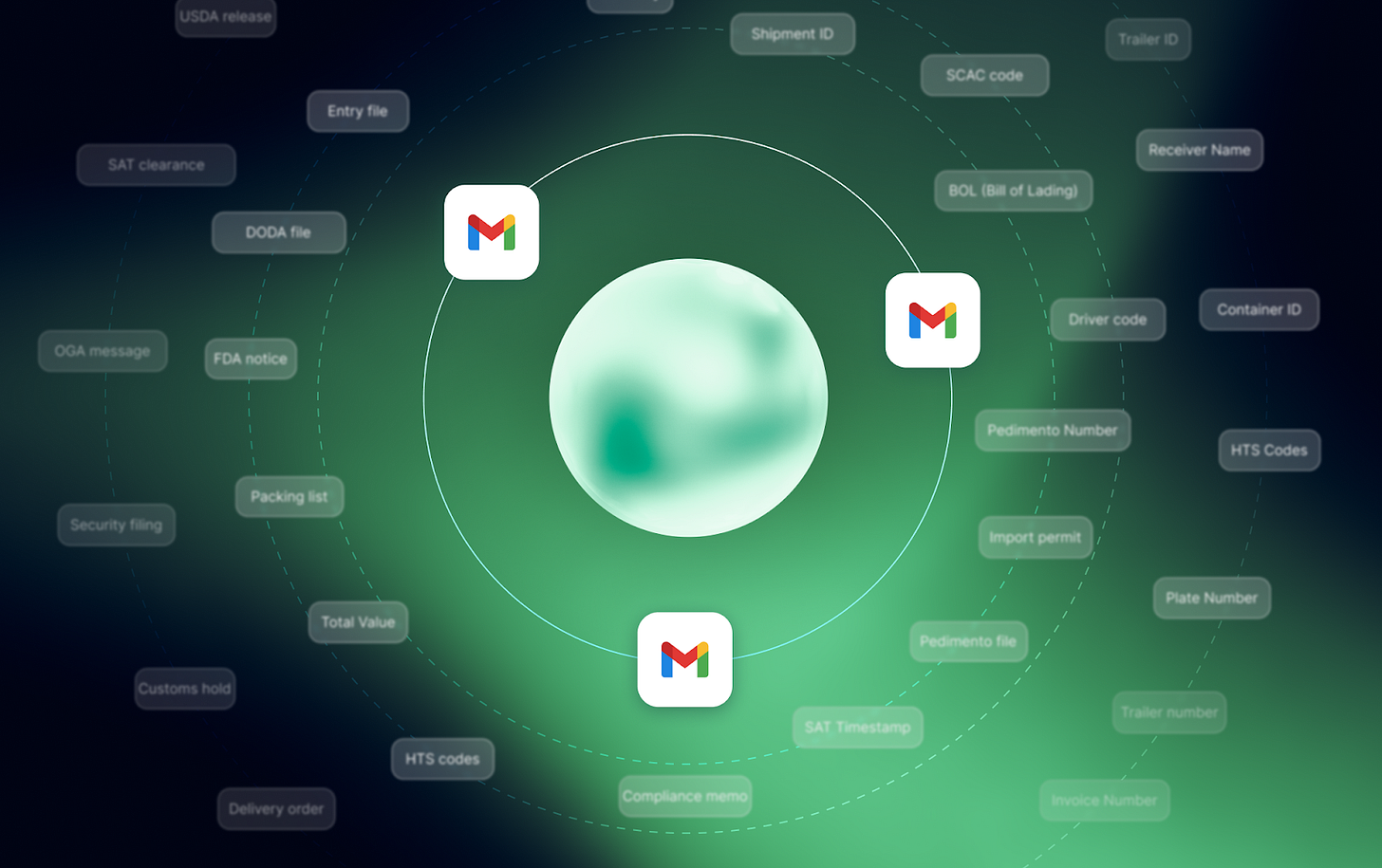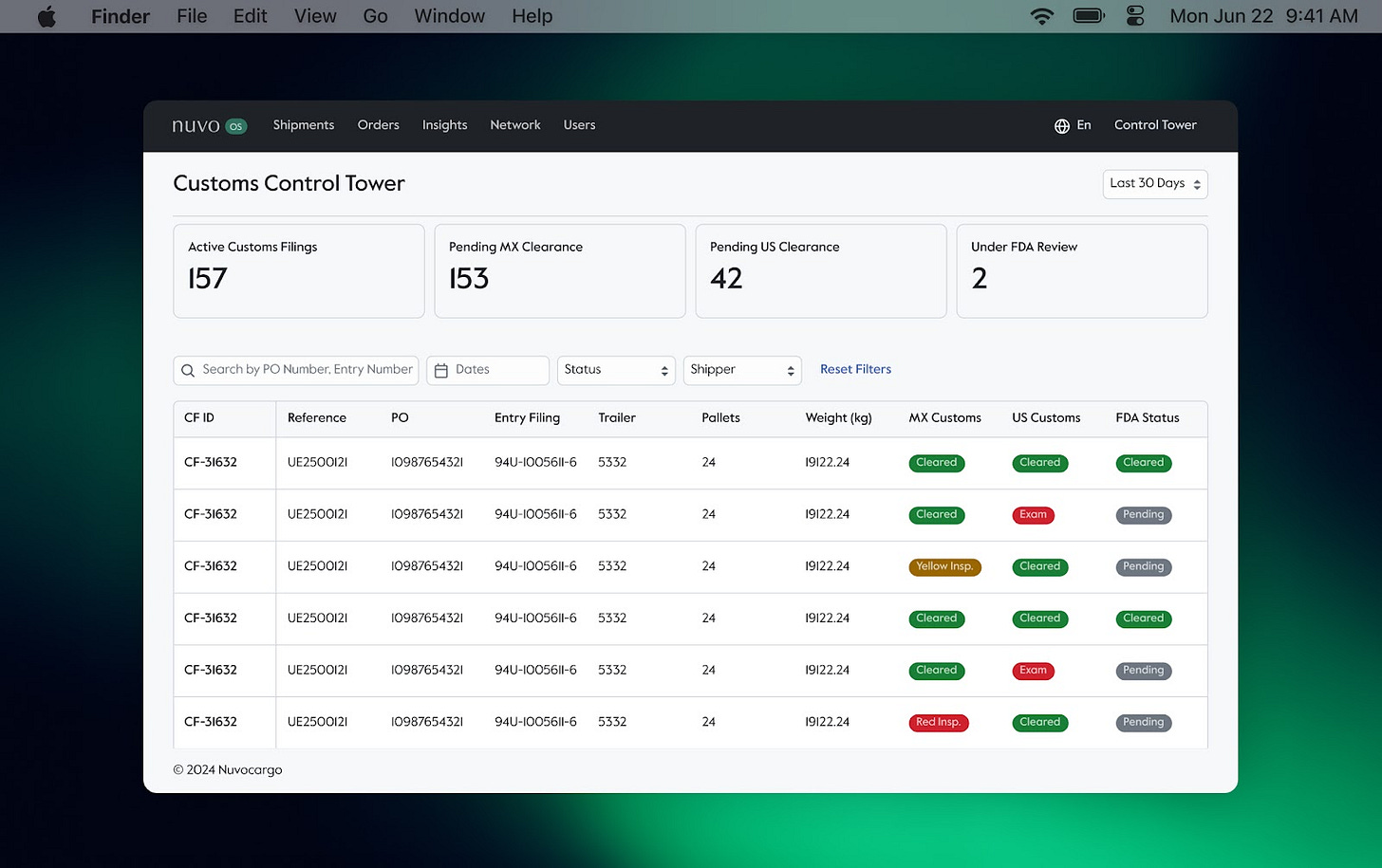#5: How we used AI to reduce 80% of status-chasing emails while delivering live border visibility
Learn how our Border AI assistant cuts down 80% of manual status chasing emails for US-MX customs filings and border crossing handoffs
In my last post, I shared how we used AI to hit 99% accuracy in processing freight documents like invoices, pedimentos, DODAs, and certificates of origin. That solves only one side of this complex problem: making sure the data inside the documents is correct.
However, even when documents are correct, the handoffs across teams to have a smooth customs and border experience are broken. Customs visibility isn’t just about having the right document, it’s about how those updates move between different teams (or not) in a timely way to avoid delays at the border. Without that coordination, the equation is incomplete.
The real reason shippers still chase status
A single northbound crossing can generate 30–50 separate emails: invoices from the shipper, pedimentos from the broker, DODAs from SAT, FDA notices, trailer IDs, driver codes, each landing in different inboxes across ops, compliance, traffic, and finance. Some get answered immediately, others sit unread for hours.
Every team then re-keys details into its own spreadsheet or TMS column: ops tracking trailer numbers, compliance logging entry IDs, traffic chasing driver codes, finance recording duties. Each slice is technically managed, but no one has a live, unified view of the shipment.
That’s the reason shippers still chase status: customs visibility isn’t lost because documents are missing, but because information is scattered across silos. Without a shared source of truth, accountability slips and follow-up turns into endless back-and-forth. And that’s why coordinators spend hours every day asking the same basic question: Has this shipment cleared or not?
From inbox chaos to live full customs visibility
We designed Border AI Assistant to meet the problem where it actually happens: the inbox. Instead of asking teams to learn a new system or forcing brokers to change how they send documents, the assistant simply joins the same email threads customers and brokers already use.
Once copied, it securely processes every client-provided customs document; pedimentos, DODAs, invoices, clearance notices and turns them into structured, real-time data. That data flows into a live dashboard that every team can see, delivering unified visibility without integrations or IT projects. Just CC your assistant, and visibility starts moving.
Once looped in, this is what our AI agent does:
Captures every update straight from email: Whether it’s a broker message, clearance notice, or a shipping document, the assistant processes it the moment it’s received. No downloads, no chasing threads.
Classifies and organizes the flow: Each update is recognized for what it is (filing, clearance status, compliance event, operational detail) and routed to the right workflow automatically.
Identifies key details with >95% accuracy: IDs, timestamps, consignee info, and status markers are recognized directly from the document, without manual entry. This eliminates the lag of copy-pasting between trackers.
Attributes context: Every detail is tied to the correct shipment, broker, and team. No more wondering “who owns this” or “which load this belongs to.”
Feeds a live dashboard: Instead of static spreadsheets, shippers see a single, real-time view of what’s cleared, what’s pending, and where action is required.
What you can see in real time
Live Clearance Status: cleared, pending, or delayed shipments across MX and US.
Customs Filings Dashboard: every filing in one place, with full history.
Broker Performance Analytics: average processing times, SLA gaps, accountability.
Duty Analysis: duties broken down by country, customer, SKU.
Item-Level Visibility: SKUs, values, units tied to each crossing.
Searchable Filing Archive: past filings instantly searchable by PO, entry, or broker.
The results
By removing the guesswork and manual tracking, Border Assistant frees up time and coordination between logistics and customs with measurable gains:
80% cut in manual status-chasing emails
45% faster first-response time on clearance issues
8–10 hours saved per coordinator each week
30% fewer shipments missing SLA targets
95% auto-classification accuracy on new filings
Why it matters
One of the most exciting things about the Border Assistant Agent is that it shifts the equation by working where the work already happens so it doesn’t force anyone onto a new system, no integrations, no software rollouts, no IT projects.
It’s rare in logistics to see something this simple unlock so much power and visibility this fast, that’s why the last few weeks of watching it run on real clients have been super exciting.
If you want to see it in action, we just recorded a session that goes deeper into how the system works and what early adopters are seeing: Watch the webinar →
Or if you’d rather skip straight to hands-on, you can request a demo from our team and see your own customs workflows running through Border Assistant.



